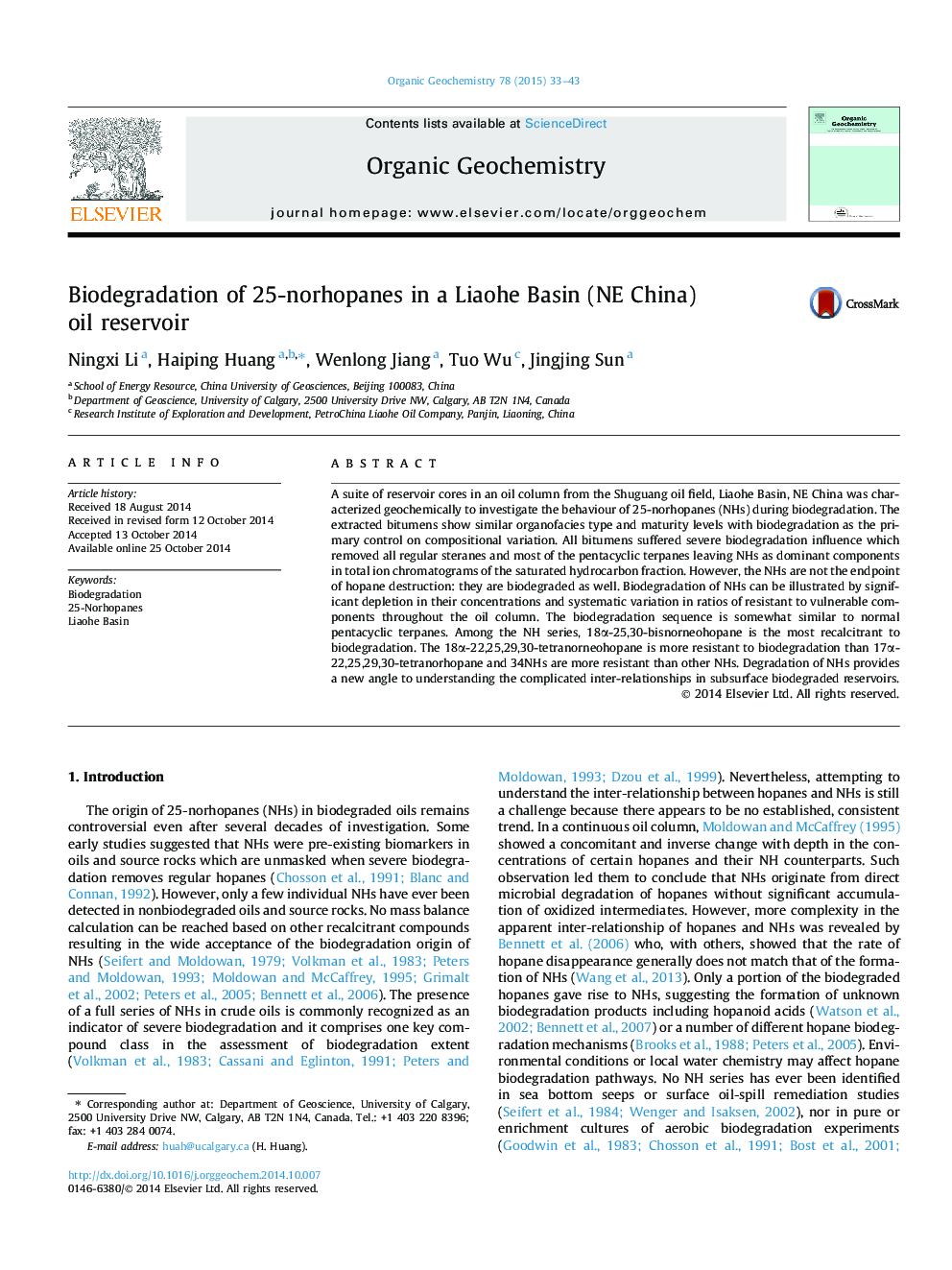| Article ID | Journal | Published Year | Pages | File Type |
|---|---|---|---|---|
| 5162661 | Organic Geochemistry | 2015 | 11 Pages |
Abstract
A suite of reservoir cores in an oil column from the Shuguang oil field, Liaohe Basin, NE China was characterized geochemically to investigate the behaviour of 25-norhopanes (NHs) during biodegradation. The extracted bitumens show similar organofacies type and maturity levels with biodegradation as the primary control on compositional variation. All bitumens suffered severe biodegradation influence which removed all regular steranes and most of the pentacyclic terpanes leaving NHs as dominant components in total ion chromatograms of the saturated hydrocarbon fraction. However, the NHs are not the endpoint of hopane destruction: they are biodegraded as well. Biodegradation of NHs can be illustrated by significant depletion in their concentrations and systematic variation in ratios of resistant to vulnerable components throughout the oil column. The biodegradation sequence is somewhat similar to normal pentacyclic terpanes. Among the NH series, 18α-25,30-bisnorneohopane is the most recalcitrant to biodegradation. The 18α-22,25,29,30-tetranorneohopane is more resistant to biodegradation than 17α-22,25,29,30-tetranorhopane and 34NHs are more resistant than other NHs. Degradation of NHs provides a new angle to understanding the complicated inter-relationships in subsurface biodegraded reservoirs.
Related Topics
Physical Sciences and Engineering
Chemistry
Organic Chemistry
Authors
Ningxi Li, Haiping Huang, Wenlong Jiang, Tuo Wu, Jingjing Sun,
